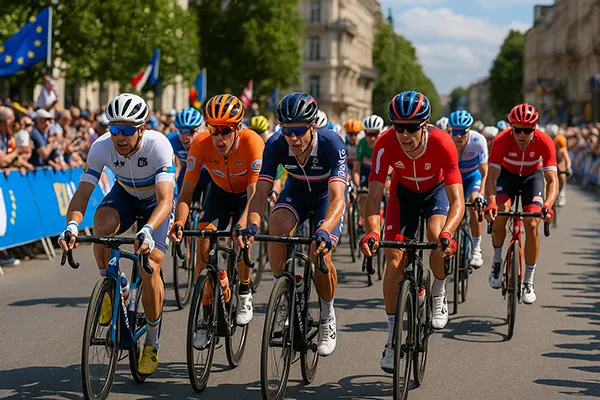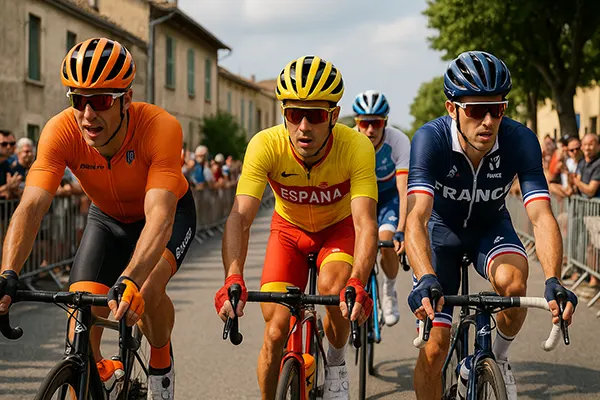
2025 UEC Road European Championships: Cycling in the Betting Spotlight
The 2025 UEC Road European Championships are set to become one of the most influential events of the season, attracting strong attention not only from cycling fans but also from analytical bettors. With a demanding race calendar, national rivalries and evolving performance trends, this edition brings a substantial amount of factual data for those who follow the sport professionally.
Key Expectations for the 2025 Championships
The Championships will take place on routes designed to challenge both sprinters and climbers, offering a mixed terrain profile that is becoming increasingly common in modern European competitions. National federations are preparing expanded squads, allowing a competitive mix of established riders and new athletes who have shown consistent progression in early-season WorldTour events.
Performance data from late 2024 and early 2025 shows a noticeable rise in the competitiveness of riders from Denmark, Italy and Slovenia. Their recent podium statistics highlight a shift in the overall power balance, which could influence race dynamics during the Championships. Technical improvements in equipment and aerodynamics remain an important factor, though the difference between leading teams is gradually shrinking.
The Championships also contribute significantly to qualification points for later international events. This increases the tactical value of each race day, as teams must balance individual ambitions with strategic national objectives. As a result, forecasting outcomes requires examining not just athlete form but also broader squad strategies.
How Course Profiles May Influence Outcomes
The 2025 route features a combination of steep ascents, narrow urban sections and long flat stretches. This mixture tends to reward all-round riders capable of producing stable power outputs across varying gradients. Bettors analysing performance metrics often focus on time-trial abilities and repeat-effort data, which remain strong indicators of resilience on such courses.
Weather is expected to play a determining role. Early forecasts for the region indicate unstable conditions during race week, which could advantage riders with proven performance in wet and windy races. Historically, championships held in similar climates have produced unpredictable scenarios, especially during technical descents.
Team support structures will also be important. Strong national teams with coordinated pacing strategies and experienced domestiques typically control breakaways more effectively. For bettors assessing possible outcomes, evaluating the depth of each national lineup offers meaningful insights into late-race decision-making.
Riders to Watch in the 2025 Season
A number of European riders enter the Championships with strong form indicators. Young climbers who excelled in early-season stage races are expected to challenge more established leaders. Their results in altitude-training blocks and early-year classics provide concrete performance data rather than speculative expectations.
Sprinters from Germany, France and Belgium demonstrated growing consistency in 2024–2025, especially in tightly contested finishes. Their acceleration patterns and positional control in the final kilometres will be essential for predicting outcomes in flat race segments. Monitoring their lead-out formations gives additional clarity for result forecasting.
Time-trial specialists are also gaining more attention this year. Improvements in pacing algorithms and aerodynamic testing are evident in recent results. For bettors, analysing time splits from comparable races remains a reliable method of evaluating who may dominate the individual time-trial discipline.
Performance Indicators Relevant for Analytical Betting
Power-to-weight ratios remain one of the most consistent indicators for forecasting climbing stages. Riders showing stable watt-per-kilogram numbers during early-season races tend to maintain competitive advantage throughout championship formats. Independent performance reports released by several teams support this trend.
Recovery metrics also contribute to more accurate predictions. The Championships include consecutive race days where fatigue accumulates quickly. Athletes with proven multi-day endurance, supported by medical staff and optimised training schedules, historically achieve stronger late-week results.
Sprint-stage predictions rely heavily on speed-sustain models. Data from velodrome testing and high-speed camera analysis has become increasingly available, enabling bettors to use concrete measurements rather than subjective impressions. These metrics continue to shape informed betting decisions.

Strategic Elements That May Shape the Championships
National team tactics will have a decisive influence on many race scenarios. Some federations have adopted more aggressive strategies for 2025, including earlier breakaway attempts and more structured rotation systems in the peloton. This shift reflects a broader trend within European racing, where collective tactics are often prioritised over individual showings.
The technical complexity of modern courses requires precise pacing strategies. The 2025 Championships include several transitions between rapid descents and short climbs. These rhythm changes often expose riders with weaker acceleration control, making pacing analysis a core element for accurate betting assessments.
Regulatory updates introduced by the UEC for 2025 place stronger emphasis on athlete safety, equipment compliance and time-trial position monitoring. These rules reduce the likelihood of equipment-based gains and encourage more transparent competition. As a result, bettors may find outcomes more closely aligned with athlete performance rather than technological variance.
How Data Trends Shape Betting Insights
Over the last three seasons, European road racing has become increasingly data-driven. Teams publish more performance benchmarks, allowing bettors to rely on factual information rather than outdated assumptions. This enhances the reliability of predictions, provided that data is interpreted within the context of national strategies and race conditions.
Betting models in 2025 place significant emphasis on mid-race metrics such as sustained speed across variable gradients, efficiency during drafting and energy-use patterns in the final third of the race. These indicators highlight not just raw strength but also tactical intelligence, an often underrated element of forecasting.
Finally, the evolving landscape of European cycling suggests that the Championships will continue shaping long-term athlete rankings. For those analysing the sport with a professional interest, the event provides a valuable data source that reflects both individual progression and broader national trends.
